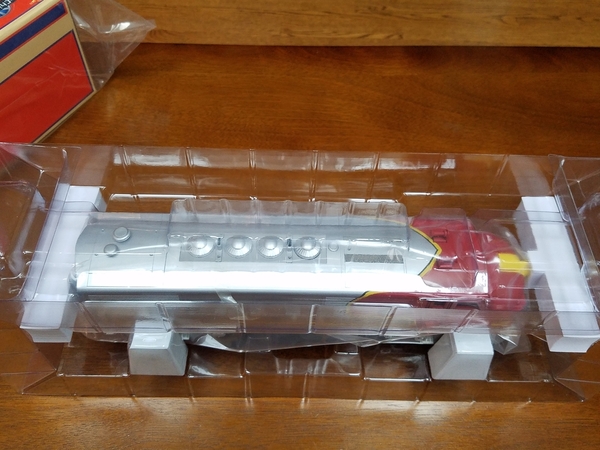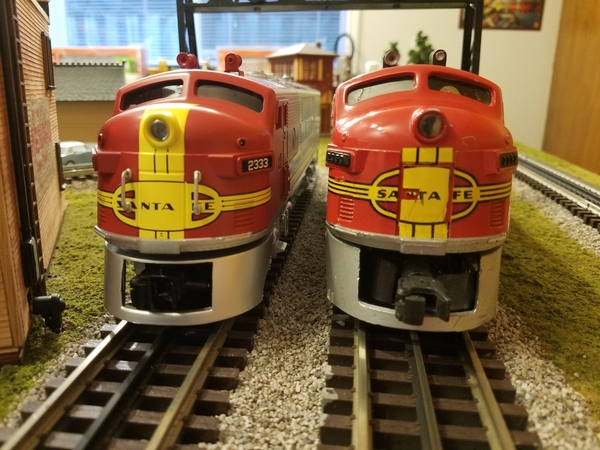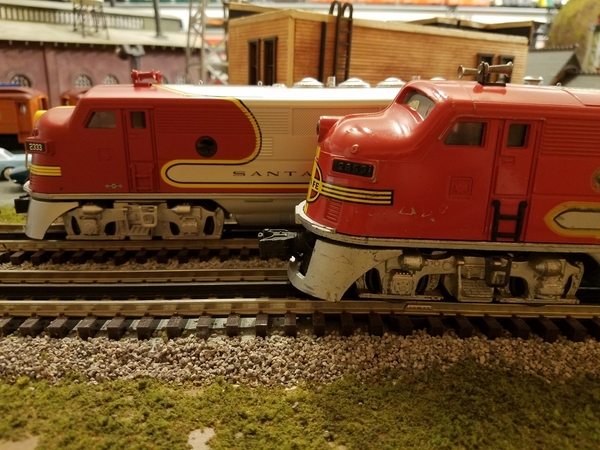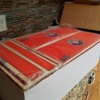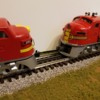UPDATE: NEW PICTURES AT THE BOTTOM
My friends at Eastside Trains in Kirkland, WA, called me on this past Friday and said my Lionel 120th Deluxe F3 set from the 2020 Catalog arrived! So, I made the drive from Tacoma to Kirkland Saturday morning in the record time of 54 minutes, not too shabby since most of the drive is on I-5 and there is still a lot of road construction in Tacoma. Always a lot of inventory to look at Eastside Trains, and I enjoyed my time with Johnny.
The good news on the Set is that the engine runs fantastic the sound is great. It starts at very slow speed, when you reverse it, the headlights change between the cabs. The Operating milk car runs flawlessly, using my vintage milk platform and remote uncoupling track. It has a deliberate, more realistic operation due to it's internal electronics.
The unfortunate part of the set, is that that red is matt and not gloss, and it is not the same shade as the original F3, and in fact looks more like the color used in the Conventional Classics from 10 or so years ago. THE LAST STATEMENT IS NOT CORRECT, IT DOES NOT LOOK LIKE THE CC! SEE PICTURES AT THE BOTTOM.
This is the outer box.
The inner box.
The description of the features on the back side.
You have to slide out the inner carton, Its a bit flimsy, it would have been easy to push it out from the other side, but you can only open one side of the box, so, I needed to tilt it up a bit from the back side, in order to slide it out.
The engines are encased in this plastic container, the top is locked in from the sides, so you just need to pull up from each side to get the top off, from there, its very easy to get the engine out, this is very convenient, the white pieces are glued in place so it makes it easy to put back the engine and take out later.
This next picture shows the vintage engine head to head with the new one. I love the gloss on the vintage!
This next shot points towards the new engine, the there are tiny red lights above the engine numbers, they look great when operating. This picture probably illustrates the color differences the best. Unfortunately, its been very overcast here and I can't get much natural light in my train room to get a better picture.
This is shot from a very low light condition, so it does not show much difference in color, but in person, there is an obvious difference. The color would probably be less of an issue for me, its the lack of gloss that makes it less appealing. This shot also shows how the grab irons, block out the Santa Fe name on the engine. And, there is too big a gap between the A and the F. So, I guess its the "NTA" railroad.
NEW Pictures:
I took these one with a Nikcon camera. On my monitor at home, and using my 66 year old eyes, the new F3 (in the middle) color is not the same as the Conventional Classics from 2009, which is the engine on the right.
At a different angle.
A shot of the roofs, there are some vents at the back of the engine. The picture is probably the best shot of the color differences, which shows the 120th F3 in the middle to be closer to the 1950s f3 on the left.
I must have used a flash on this shot. I like how the number boards are visible on the new 2333!
Another shot of the 120th F3 versus the Conventional Classic. The porthole looks to be smoked out a bit on the 120th F3, a nice touch.
The Lionel 2353 Santa Fe from the 1953-55 era, I was born in 1955, and there are days that I feel like that engine, a bit nicked up, but still cleans up nicely.
You can tell how crisp the paint detail is on the new f3, versus the vintage engione.
Best, Dave








